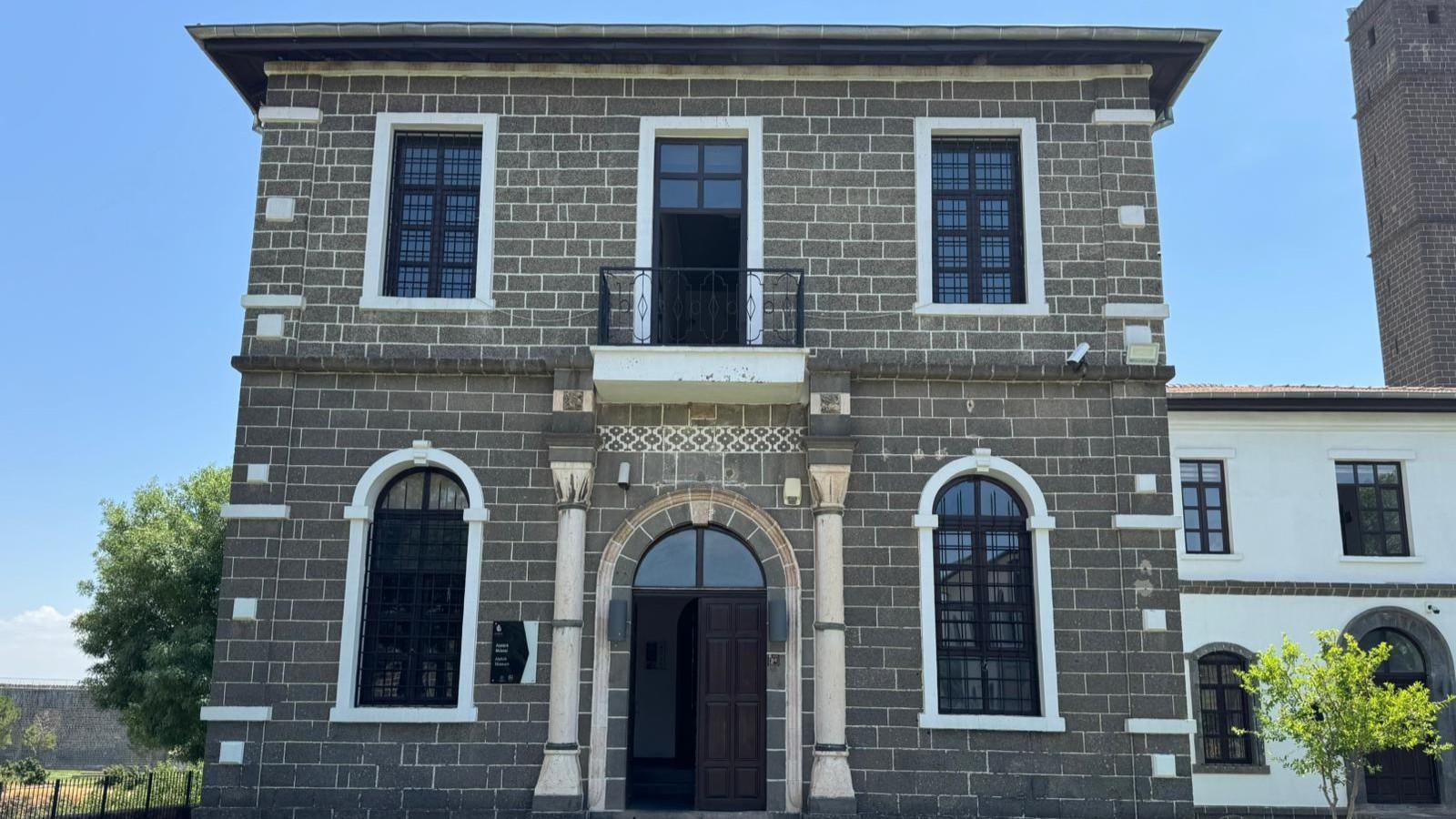
Rising within the historic İçkale district of the southeastern province of Diyarbakır’s Sur district, the Atatürk Museum stands as a unique architectural landmark, distinguished by its rare use of volcanic glass.
Constructed with a basalt foundation and later crowned with an obsidian-clad upper floor, the building is believed to be the only structure in the world made with the volcanic stone, known for its sharp edges rather than its strength.
The origins of the building date back to 1902, as it was erected during the Ottoman period as a single-story basalt stone structure. Its historical importance grew when Mustafa Kemal Atatürk, the founder of modern Türkiye — then serving as inspector of the Second Army, used it as his headquarters during his mission to Diyarbakır in 1917 amid the conflicts with Russia.
“Originally built in 1902, it was expanded with a second floor in the 1940s, and since 1973, it has served as a museum dedicated to Atatürk. This building is significant because Atatürk not only lived and worked here during the First World War but also returned in 1937,” said Müjdat Gizligöl, the acting director of Diyarbakır Museum.
Atatürk first arrived in Silvan in 1916 and later moved to Diyarbakır, where the building was assigned to him as his operational base. Decades later, when he returned to the city in 1937 for the inauguration of the railway, Atatürk once again stayed in the same house, revisiting the place where he had once commanded military operations.
In the 1940s, a second floor was added, constructed with obsidian stones bound with mortar. Though obsidian has no load-bearing quality and is rarely used in architecture, its shimmering black surfaces were chosen for aesthetic purposes.
Scholars suggest the stones were likely transported from Bingöl’s Solhan region, home to the nearest obsidian deposits, though some believe they may have come from as far as Sarıkamış in Kars.
When touched by the rising or setting sun, the dark glass glitters intensely, making the building visible from afar and lending it an almost otherworldly brilliance.
The building was converted into a museum in 1973 and today houses a collection dedicated to Atatürk’s time in Diyarbakır and his role during the war years.
Visitors can explore wax figures, historical photographs, films and war memorabilia, alongside rooms recreated to reflect the era of Atatürk’s stay.
Among the most notable displays are artifacts dating back to 1914, used during the wartime campaign in which Atatürk took part.
‘One of its kind’
On the rare use of volcanic glass, Gizligöl added, “The second floor is built entirely of obsidian stones, something unheard of in architecture. Obsidian is not a structural stone — it is brittle, better known for its use in Neolithic times for cutting and piercing tools.”
“Yet here it was applied decoratively, bound with mortar to form walls that gleam under the sun. This makes the building the only one of its kind worldwide.”
He further highlighted the striking contrast between the building’s two levels. “The ground floor is of basalt, known locally as an exterior stone, which keeps the interior cool. The obsidian above, in contrast, was crushed and set in place for aesthetic effect.”
“With sunrise and sunset, the glassy stones catch the light, giving the building a luminous quality that sets it apart in İçkale.”
Today, the Atatürk Museum continues to attract large numbers of visitors, both for its rare architectural features and its deep historical significance. Beyond its glowing obsidian façade, it serves as a monument to Atatürk’s enduring connection to Diyarbakır.